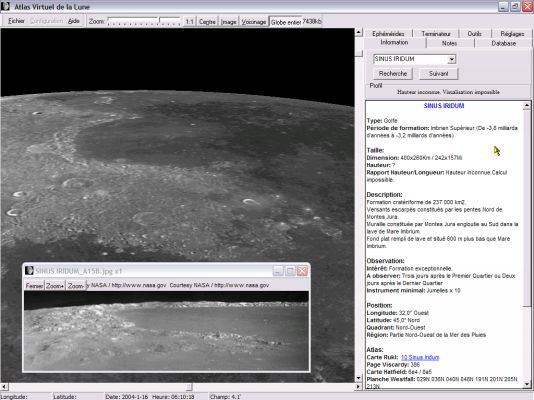Difference between revisions of "January 18, 2015"
(Created page with "__NOTOC__ =LeGrand Moon= Originally published January 18, 2004 <table width="85%" border="0" align="center" cellpadding="6" cellspacing="2"> <tr> </tr> </table> <table width=...") |
|||
| Line 45: | Line 45: | ||
<td><p align="center" class="main_titles"><b>Author & Editor:</b><br> | <td><p align="center" class="main_titles"><b>Author & Editor:</b><br> | ||
[mailto:tychocrater@yahoo.com Charles A. Wood]</p> | [mailto:tychocrater@yahoo.com Charles A. Wood]</p> | ||
| − | < | + | <!-- Cleanup of credits --> |
| − | + | <!-- Cleanup of credits --> | |
| − | < | + | <!-- Cleanup of credits --> |
| − | + | <!-- Cleanup of credits --> | |
| − | < | + | <!-- Cleanup of credits --> |
| − | + | <!-- Cleanup of credits --> | |
| + | <!-- Cleanup of credits --> | ||
</tr> | </tr> | ||
</table> | </table> | ||
| Line 60: | Line 61: | ||
Register, and click on the <b>Discussion</b> tab at the top of the page. | Register, and click on the <b>Discussion</b> tab at the top of the page. | ||
<hr> | <hr> | ||
| + | <!-- | ||
You can support LPOD when you buy any book from Amazon thru [[Support_ LPOD|LPOD]]! | You can support LPOD when you buy any book from Amazon thru [[Support_ LPOD|LPOD]]! | ||
| + | --> | ||
<span style="font-size:88%"> | <span style="font-size:88%"> | ||
<center> | <center> | ||
Revision as of 12:09, 1 February 2015
LeGrand Moon
Originally published January 18, 2004
Image Credit: Christian LeGrand |
|
LeGrand Moon Recently I recommended lunar charts by Antonin Rukl as the absolute best available. They are...to post on a wall, unfold at the eyepiece, or savor as a lovely book, but I must retract the word "absolute." Maps of the Moon have gone digital, and whereas a computer is less convenient than a paper map for many uses, the power of a digital lunar map to display the Moon is truly amazing. The image above demonstrates some ways digital maps can morph the Moon that paper ones can't, no matter how much you twist or bend them. This view from the Virtual Moon Atlas by Christian LeGrand and Patrick Chevalley is part of a Clementine global mosaic of the Moon looking eastward across Sinus Iridum, with part of Mare Imbrium on the right. The inset shows a low oblique perspective (a photo image draped over Clementine digital topography) of Iridum, as could be seen out the window of your personal lunar orbiter. The panel to the right offers all sorts of data on the features seen in the map image. VMA can display the portion of the Moon illuminated (including libration effects) on any given night, with optional nomenclature and lat/long grids. It can also overlay layers showing other types of data such as geology, and perhaps in the future, compositional and geophysical - or selenophysical - data. VMA is an extraordinary tool for the amateur and the professional student of the Moon. And using a standard estimation of value (number of features divided by cost), the fact that VMA is free, makes its value infinite! Related Links: Tomorrow's LPOD: King of the Craters |
Author & Editor: |
COMMENTS?
Register, and click on the Discussion tab at the top of the page.
Contributions to http://www2.lpod.org/ are licensed under a Creative Commons Attribution No-Derivative-Works Non-Commercial 3.0 License. 




